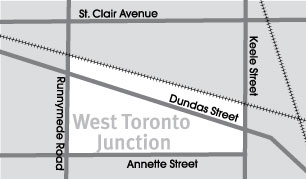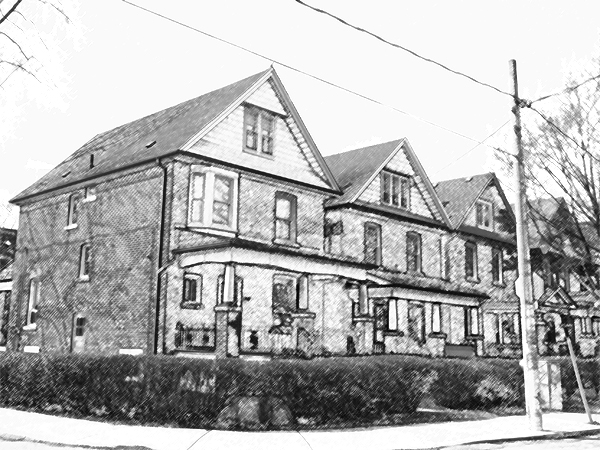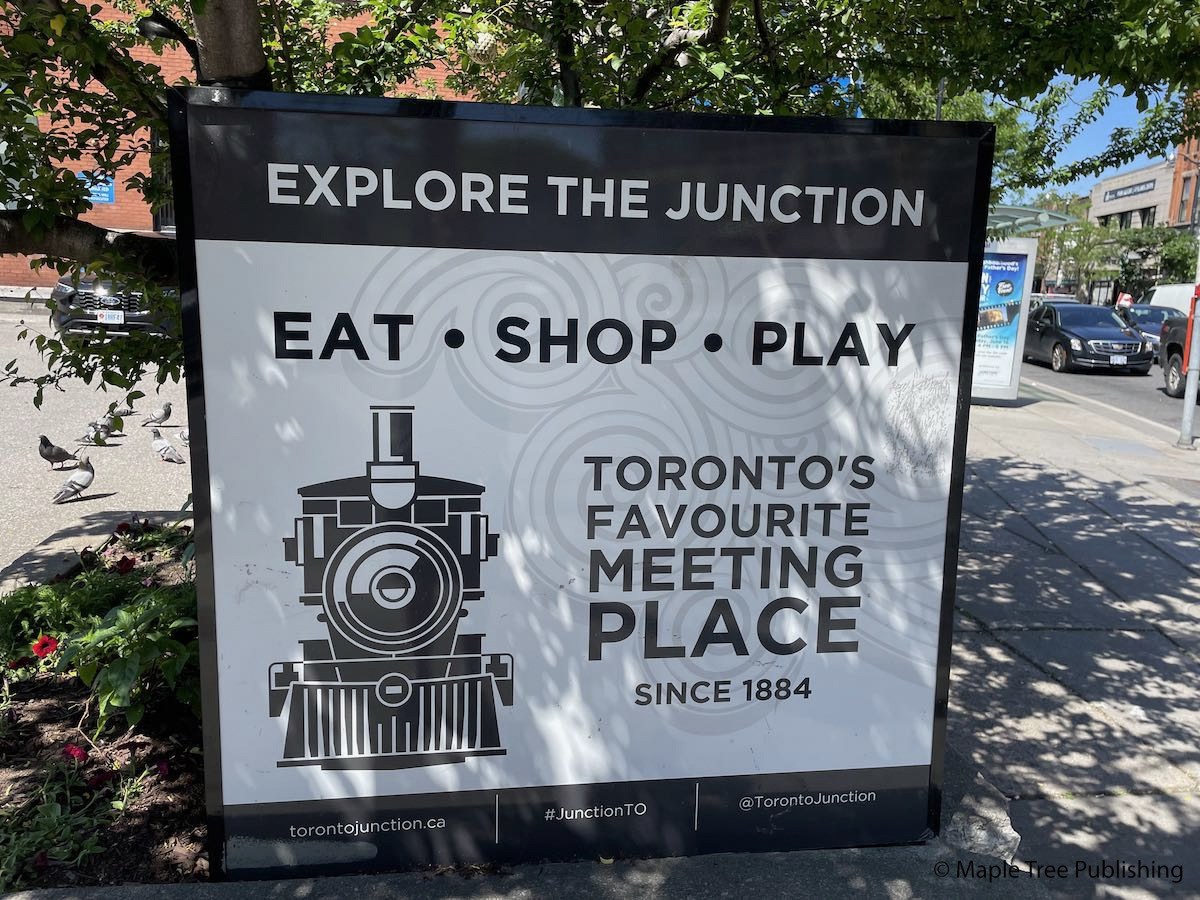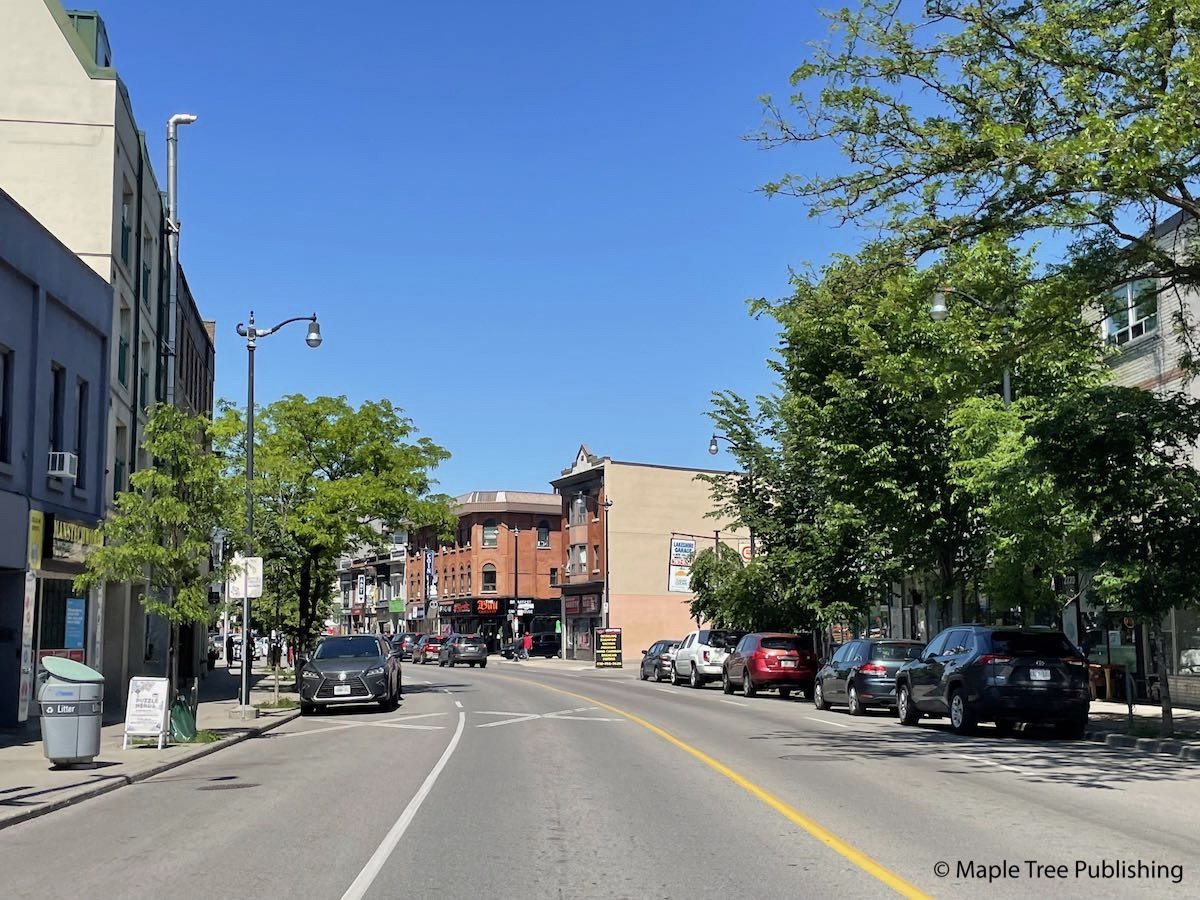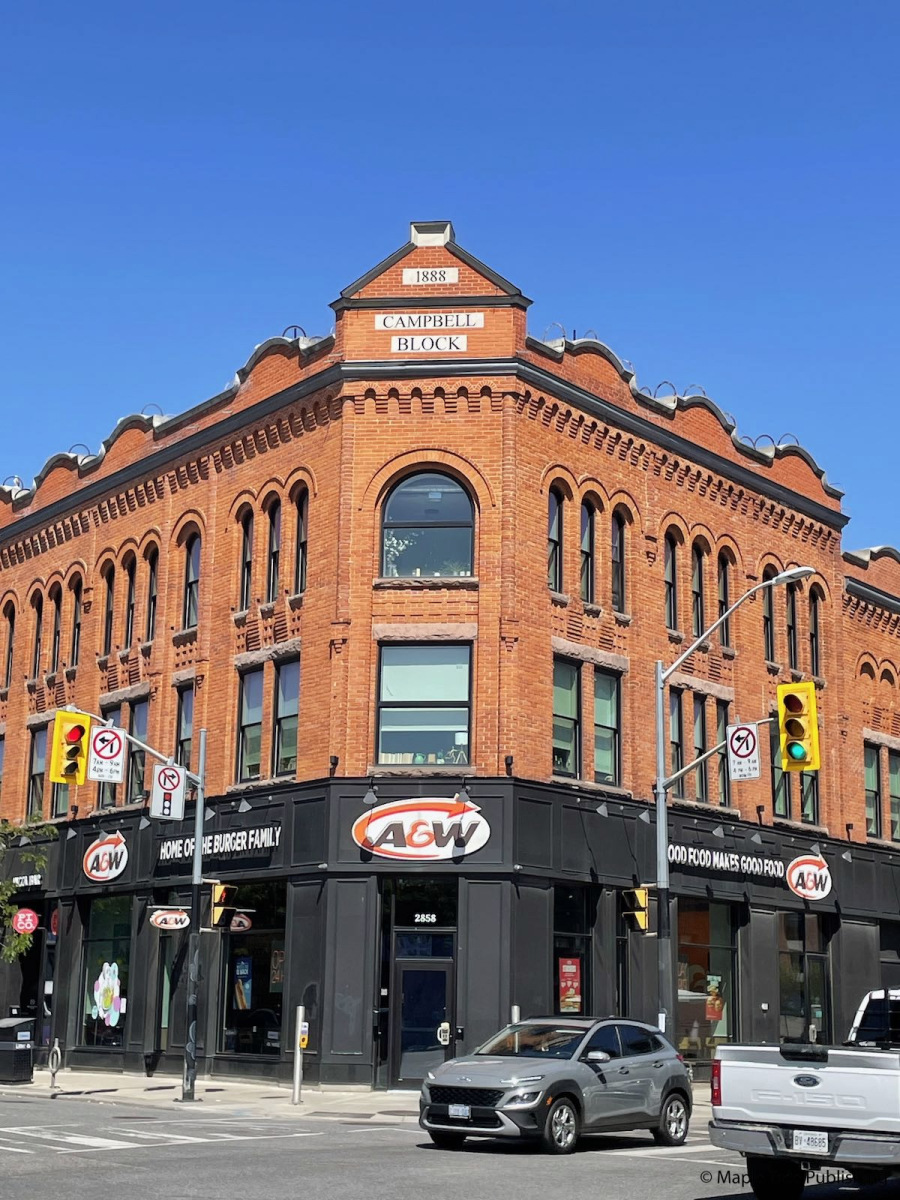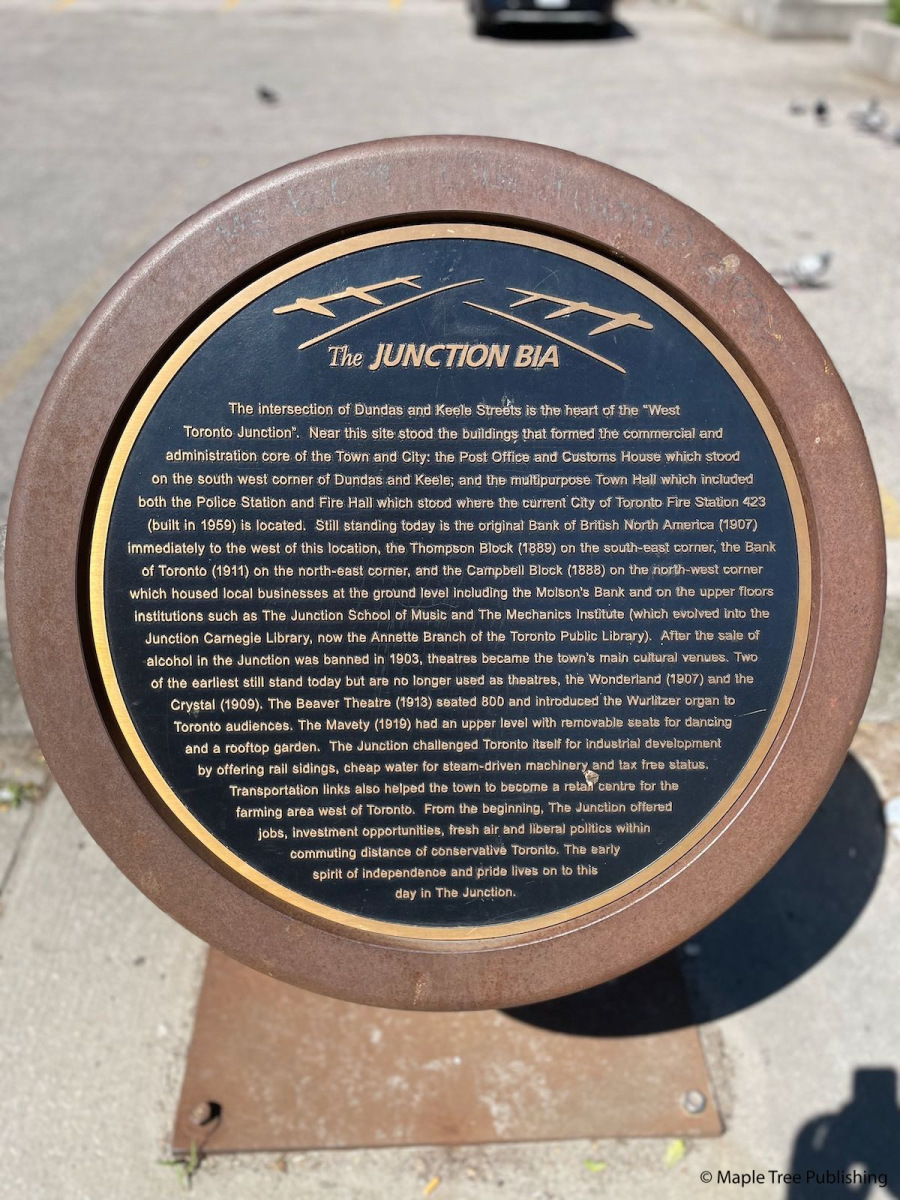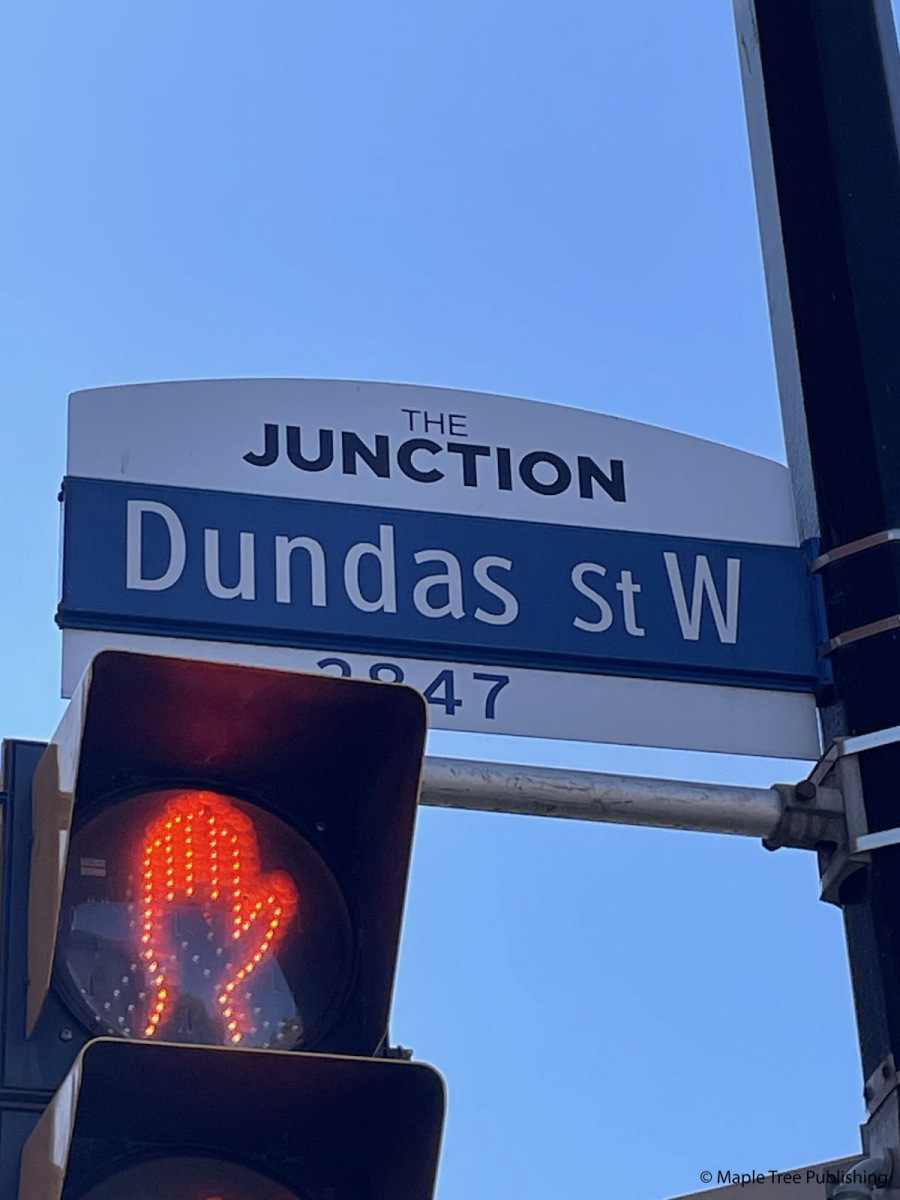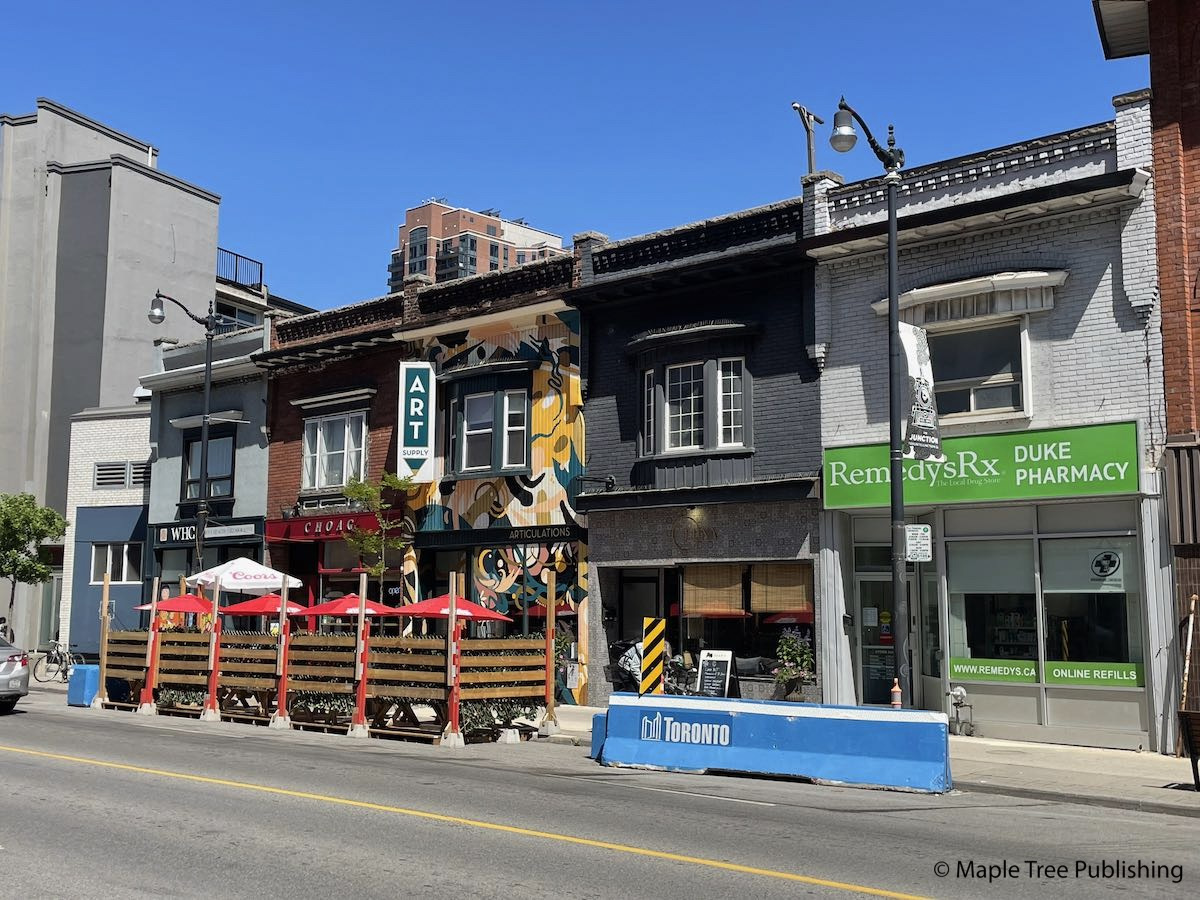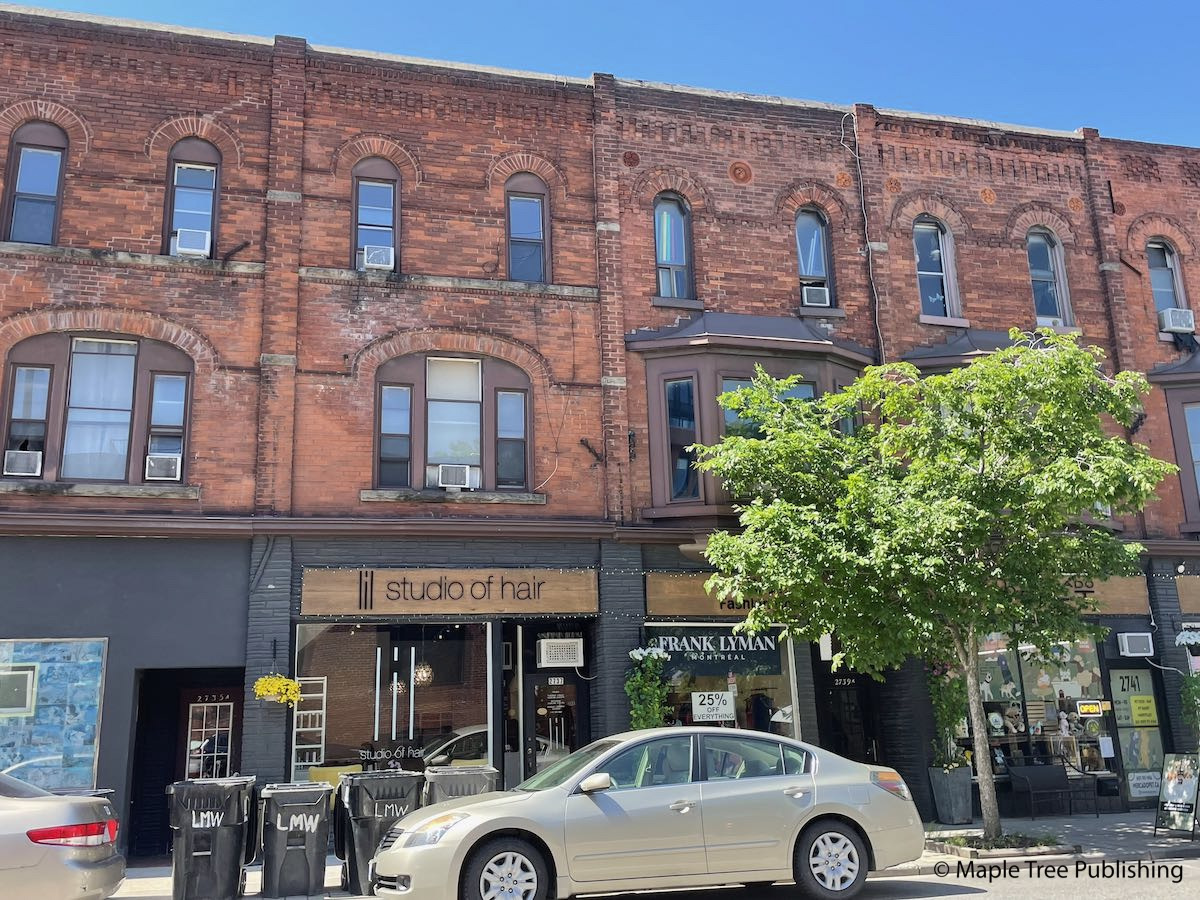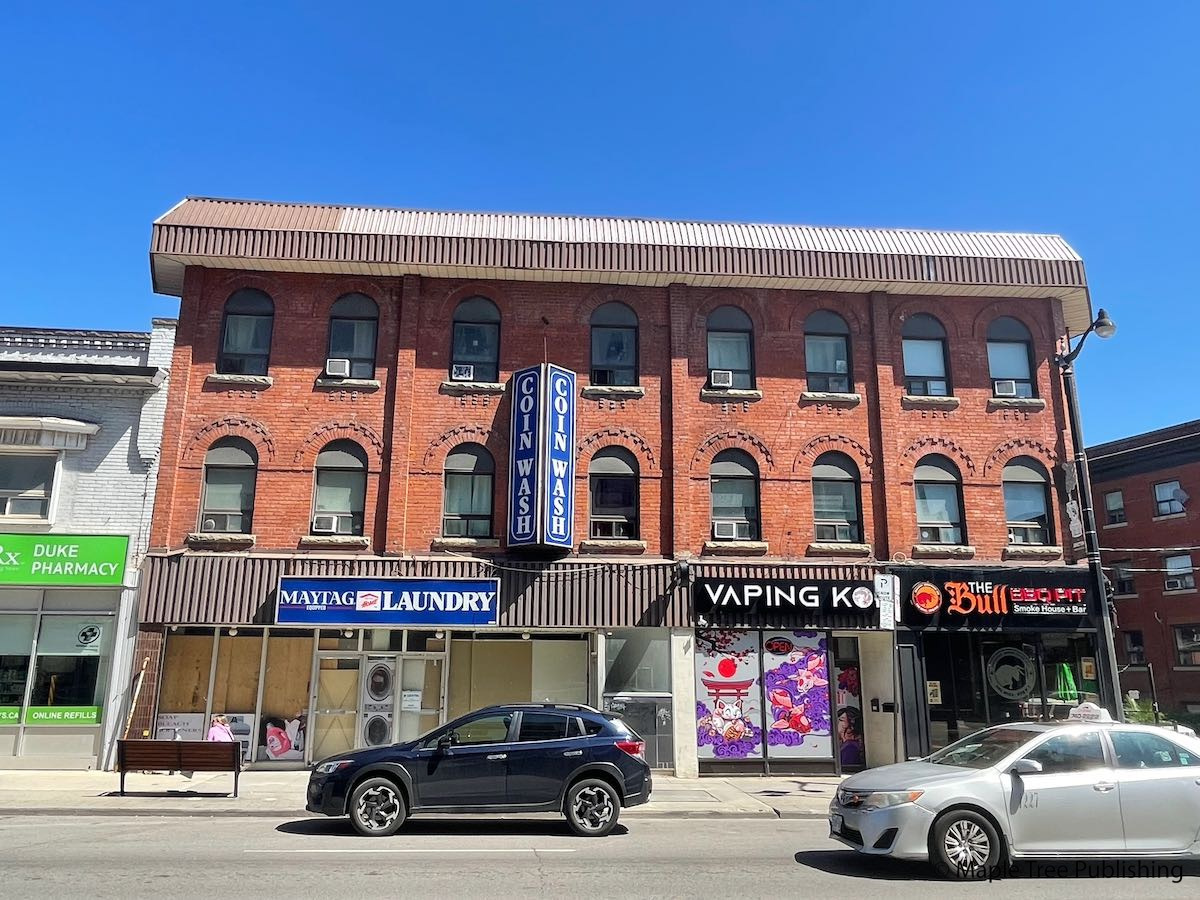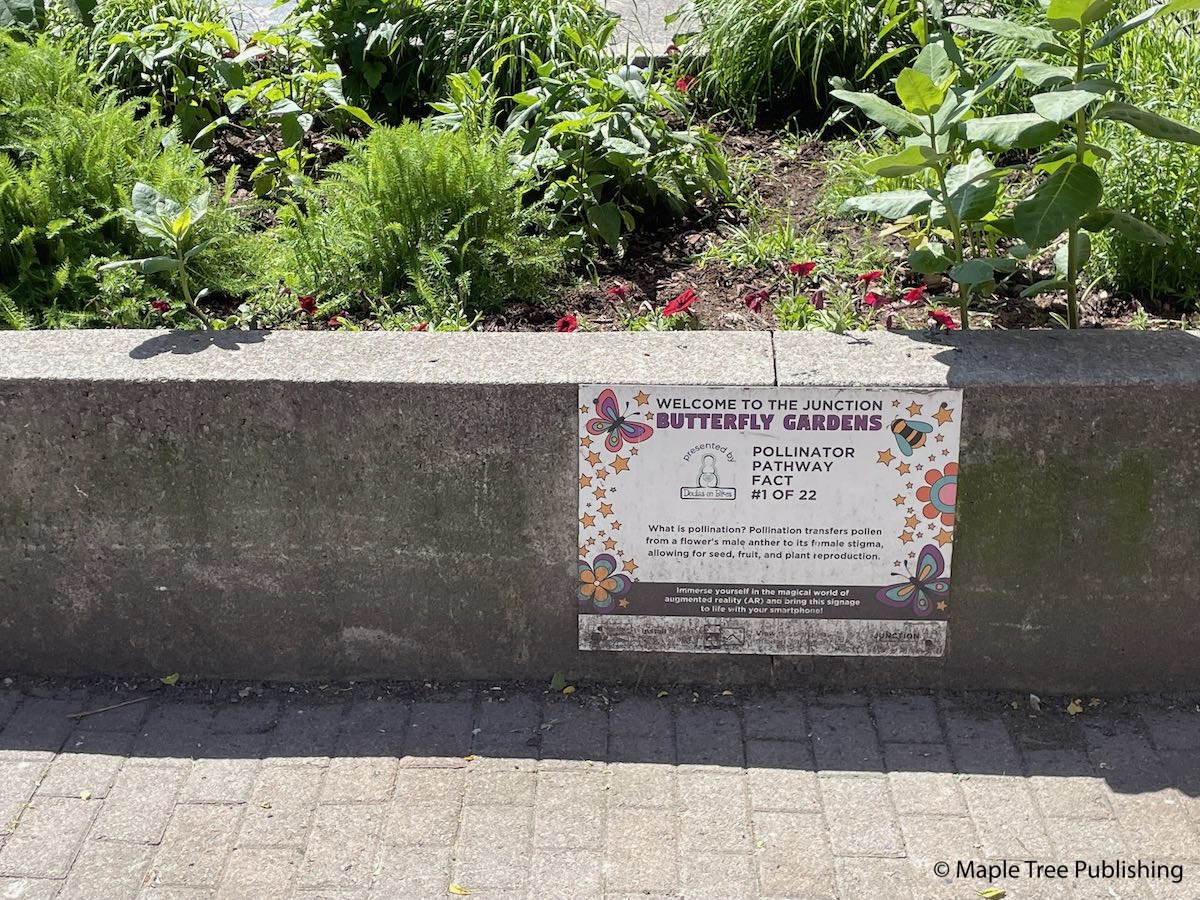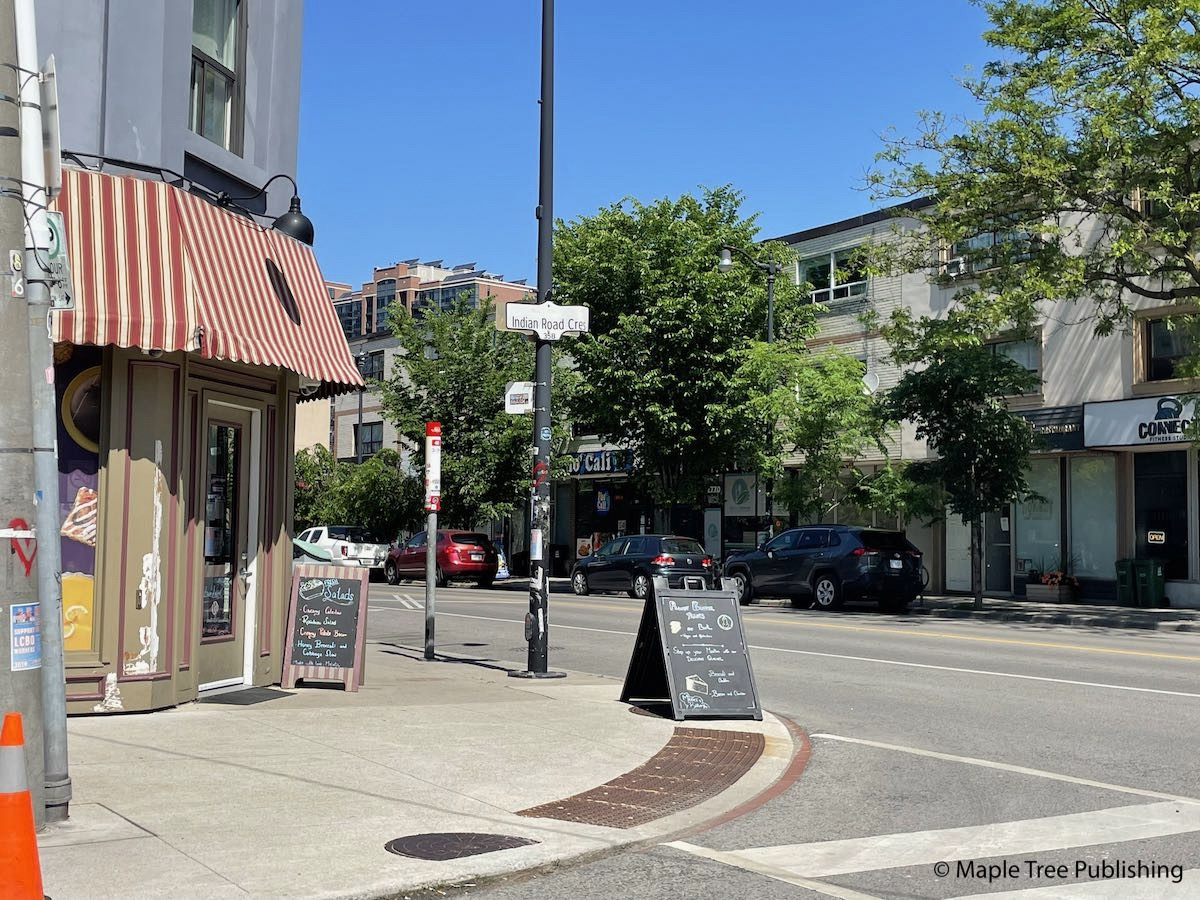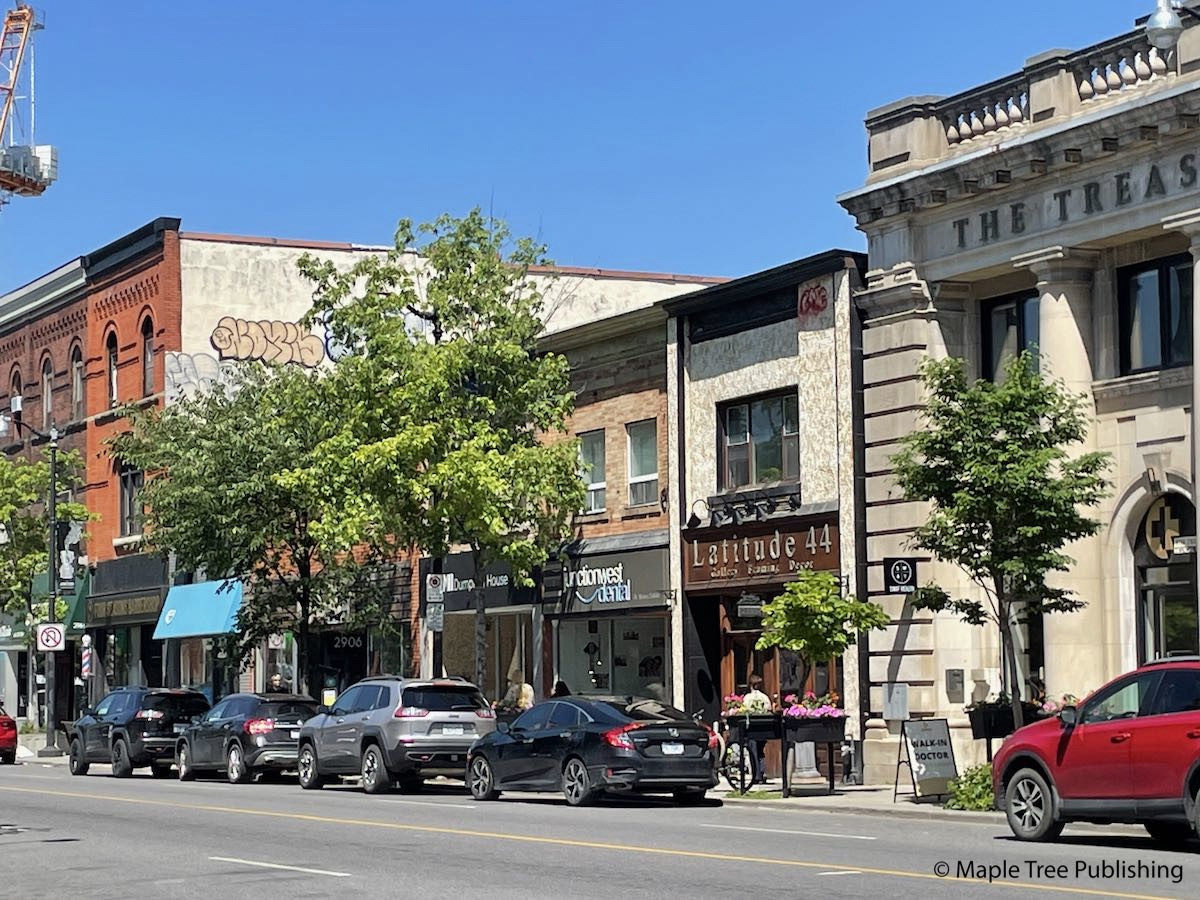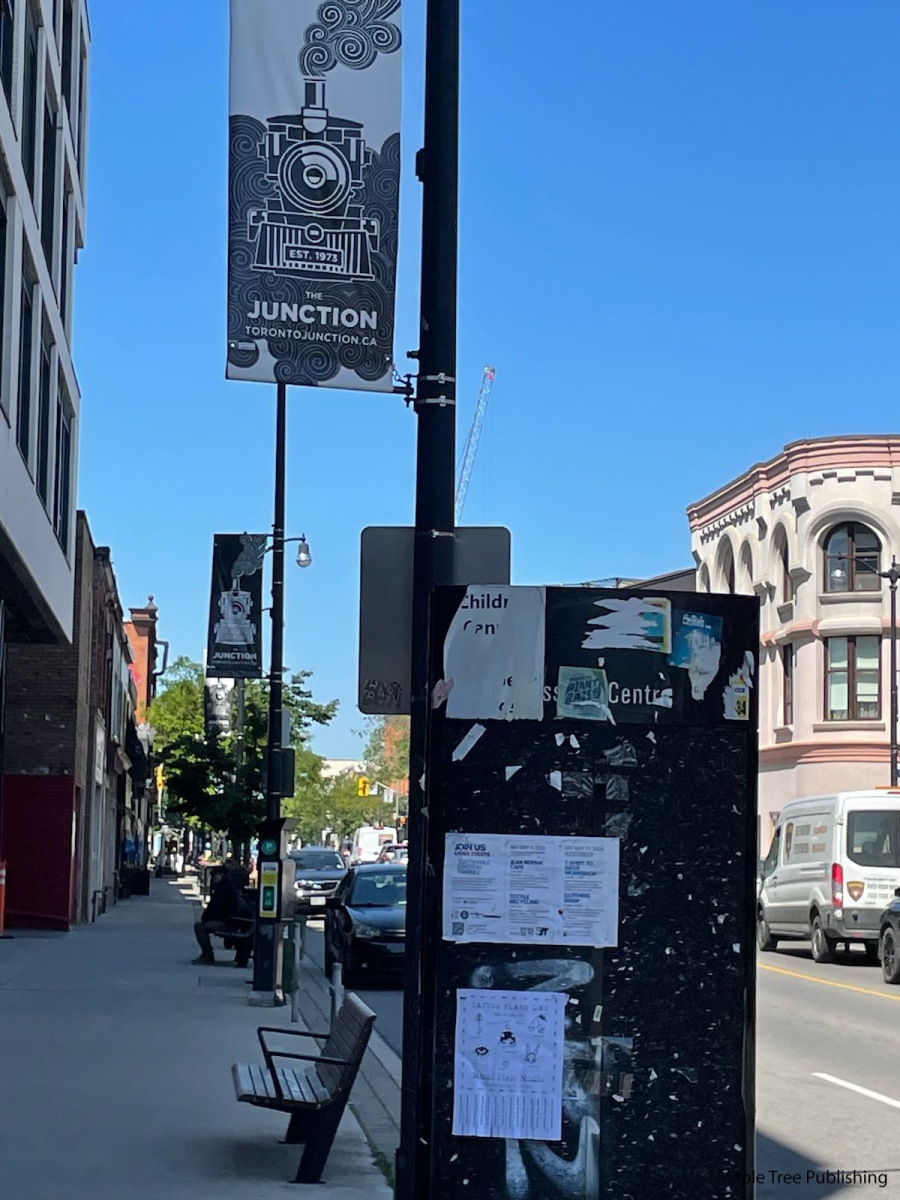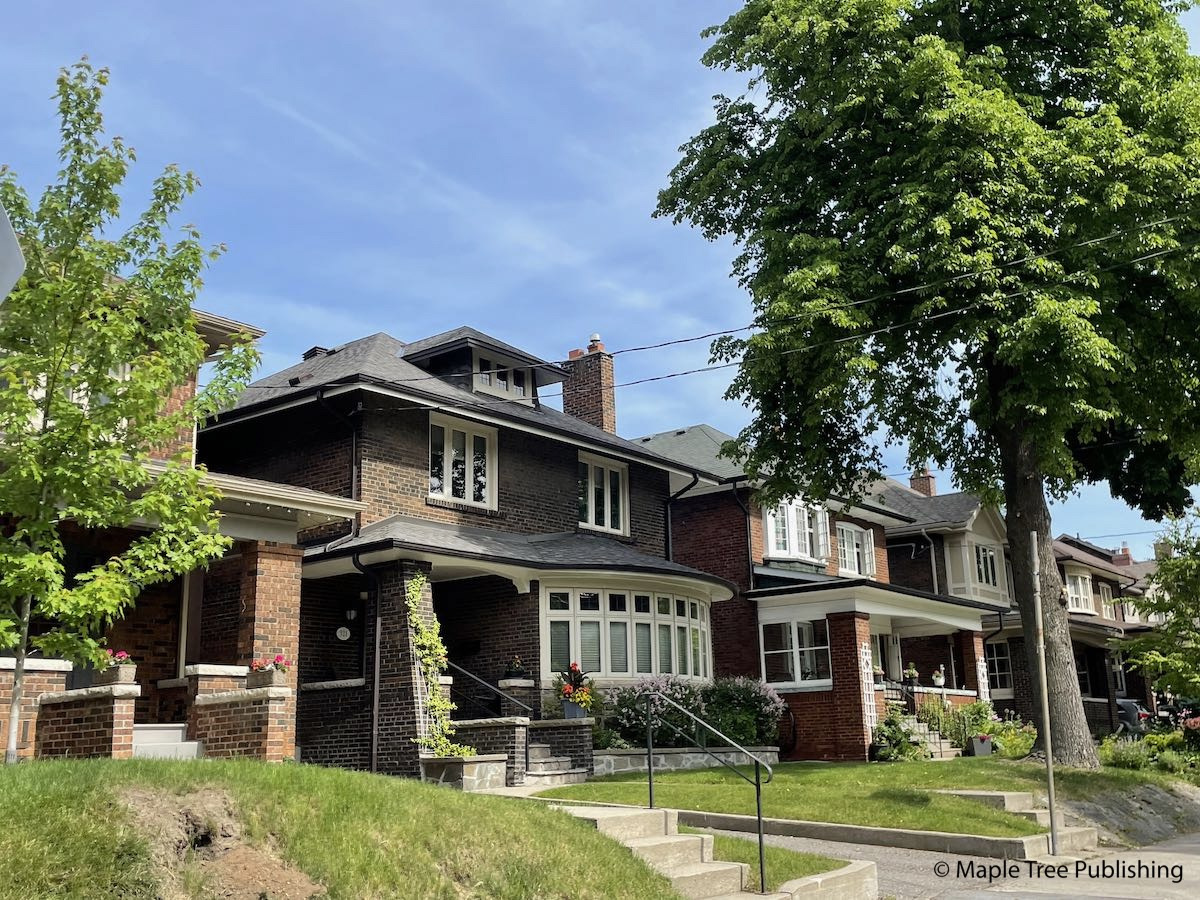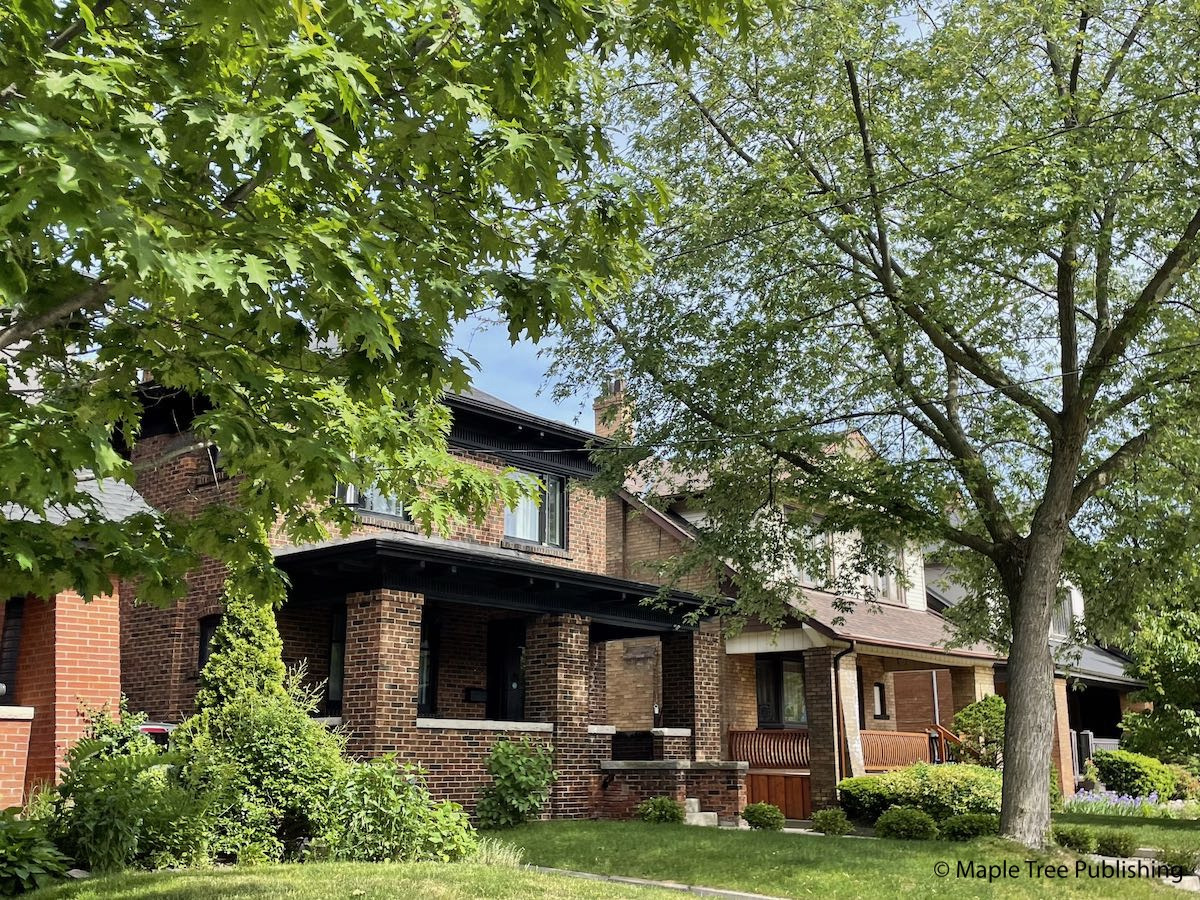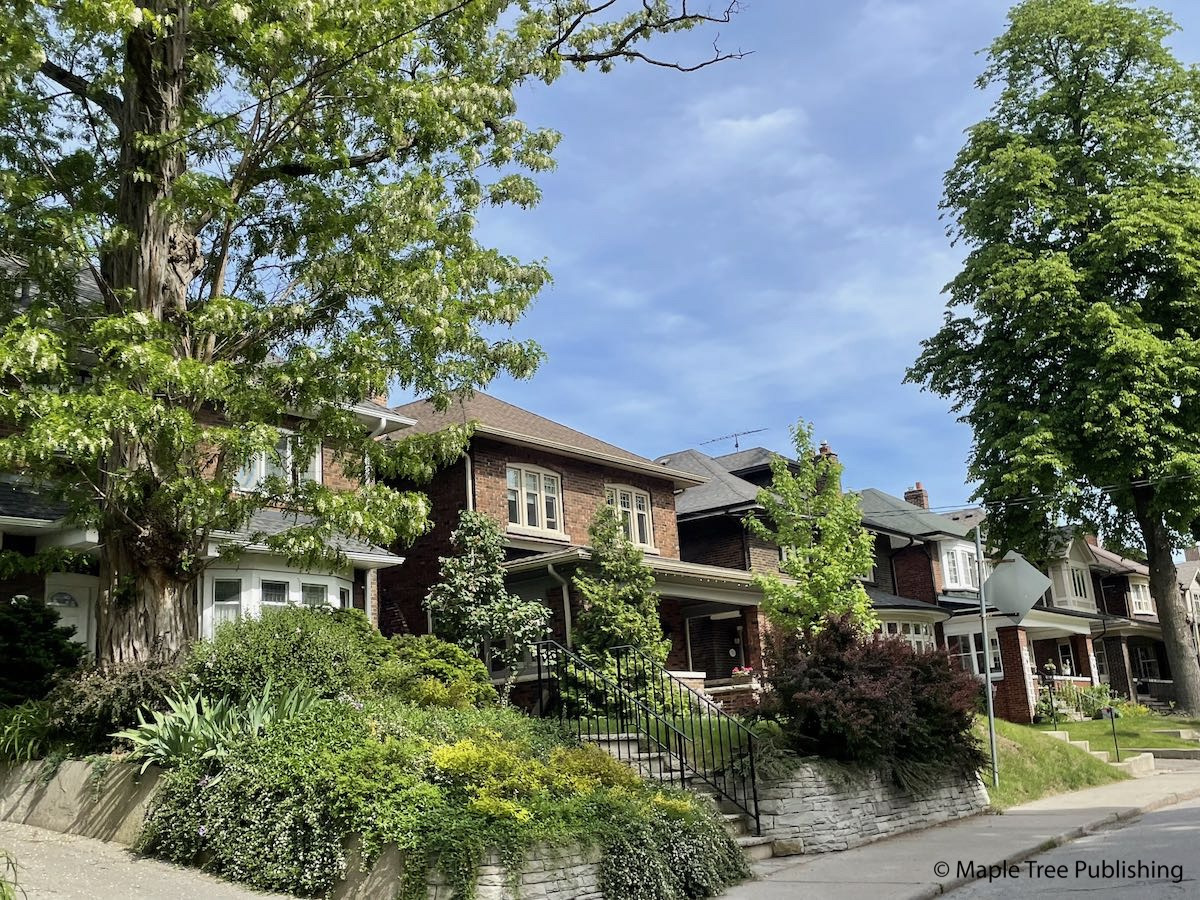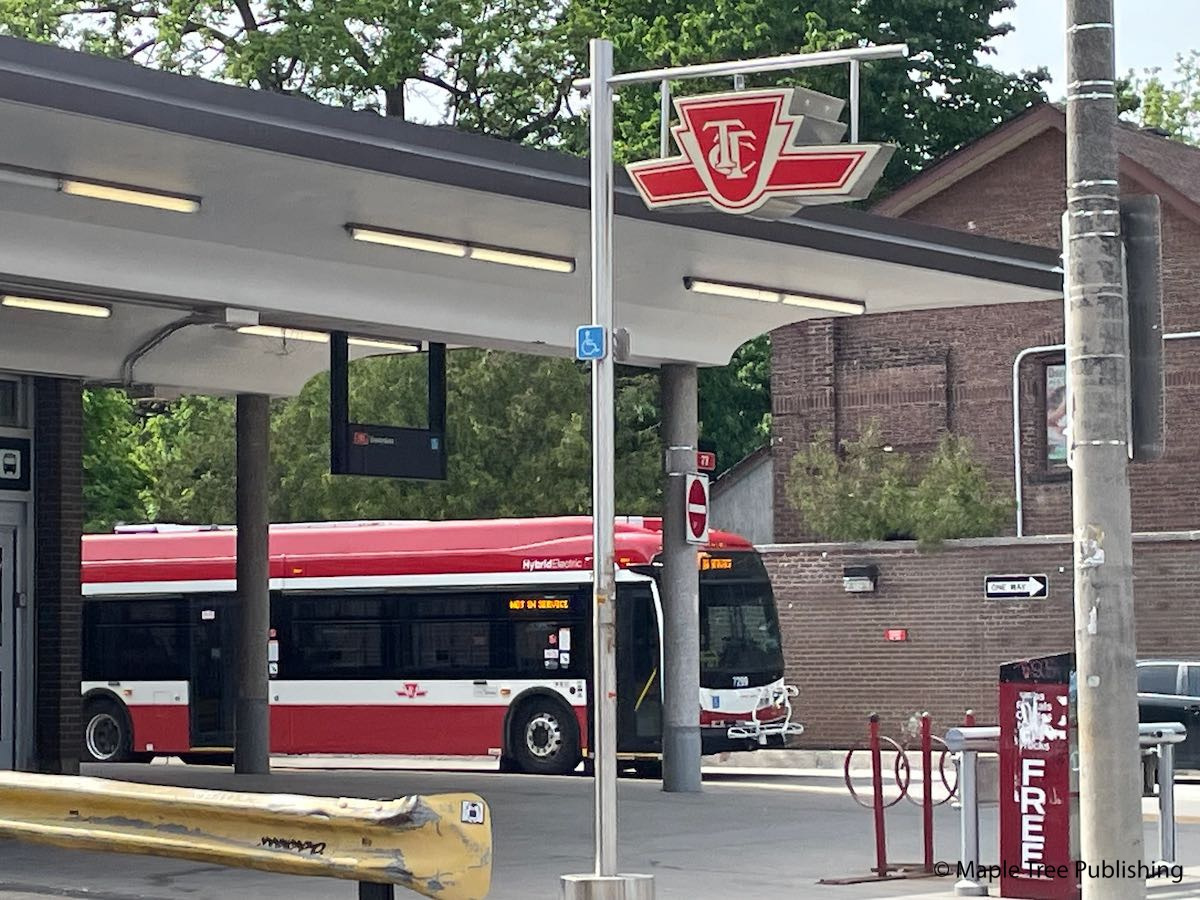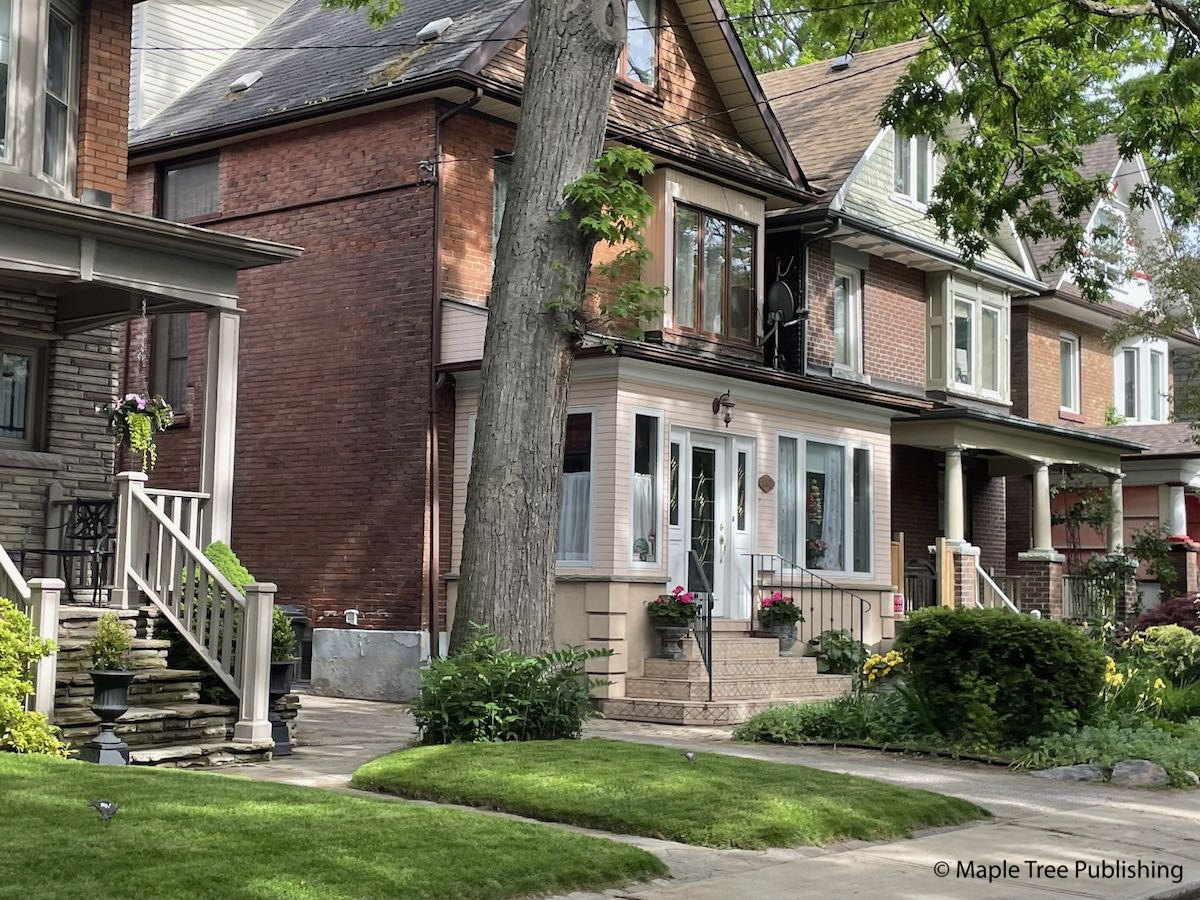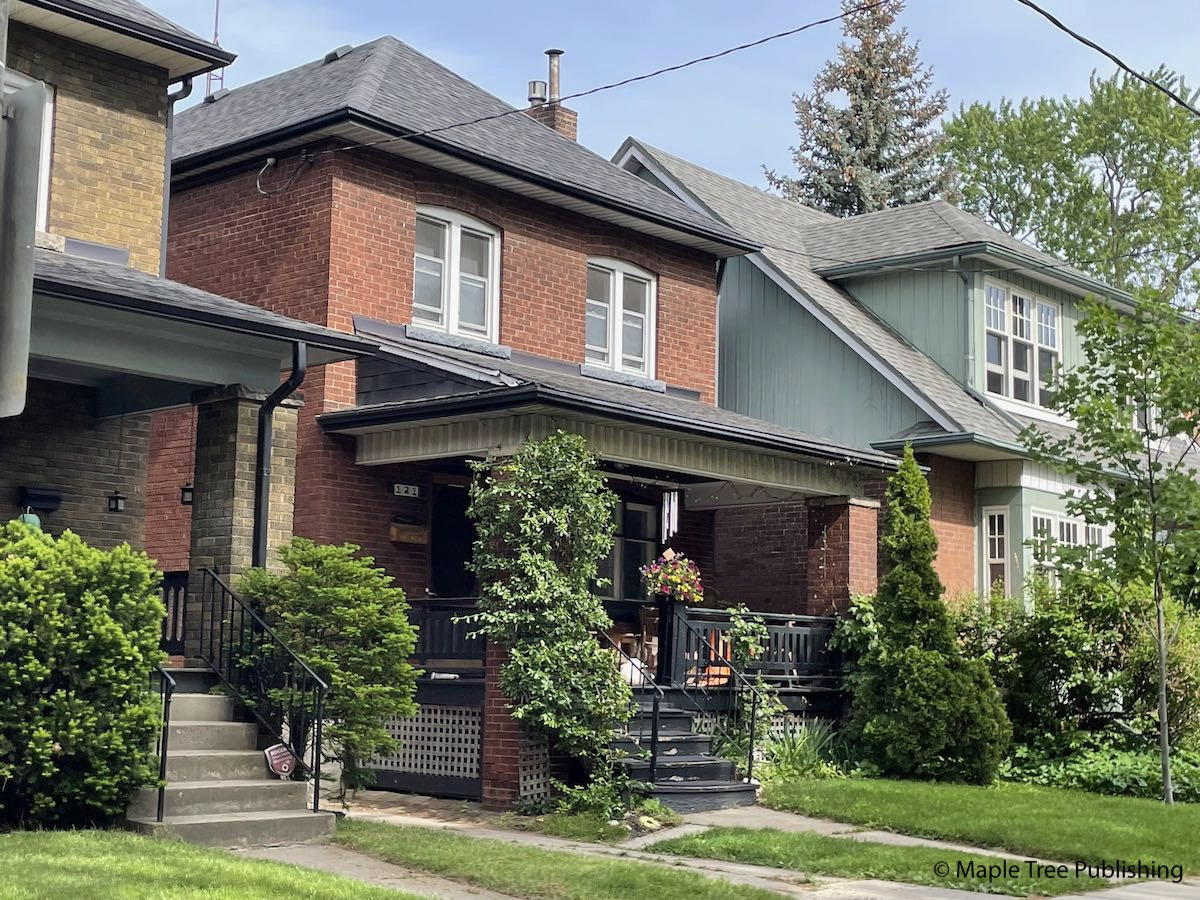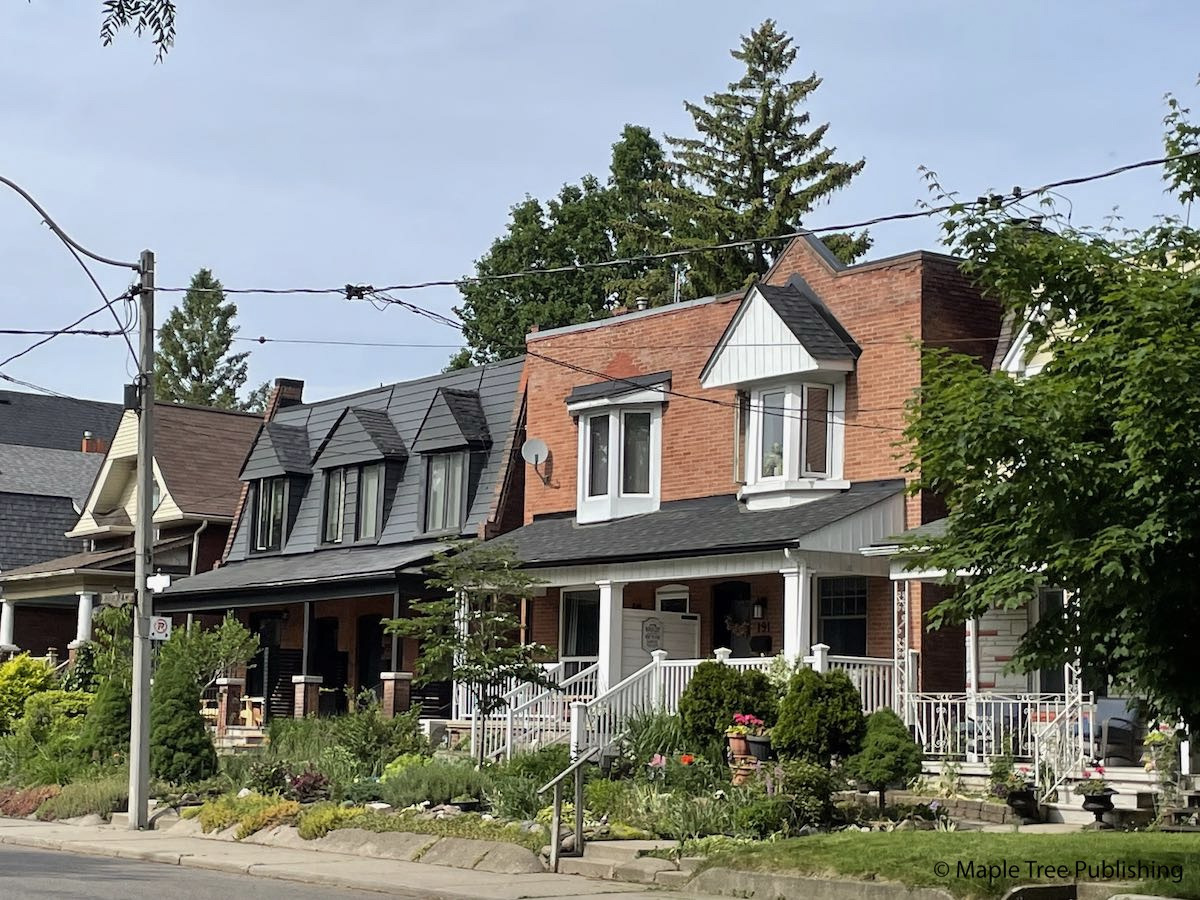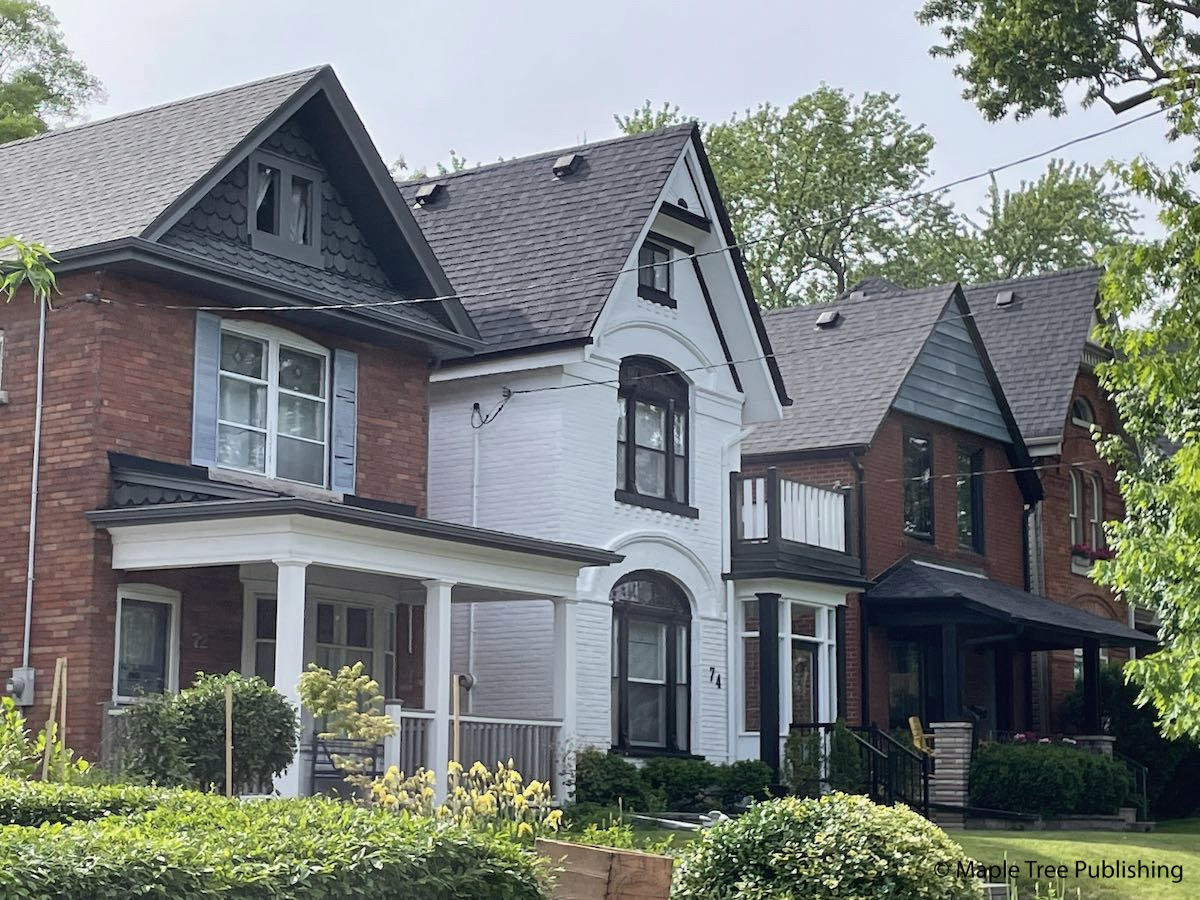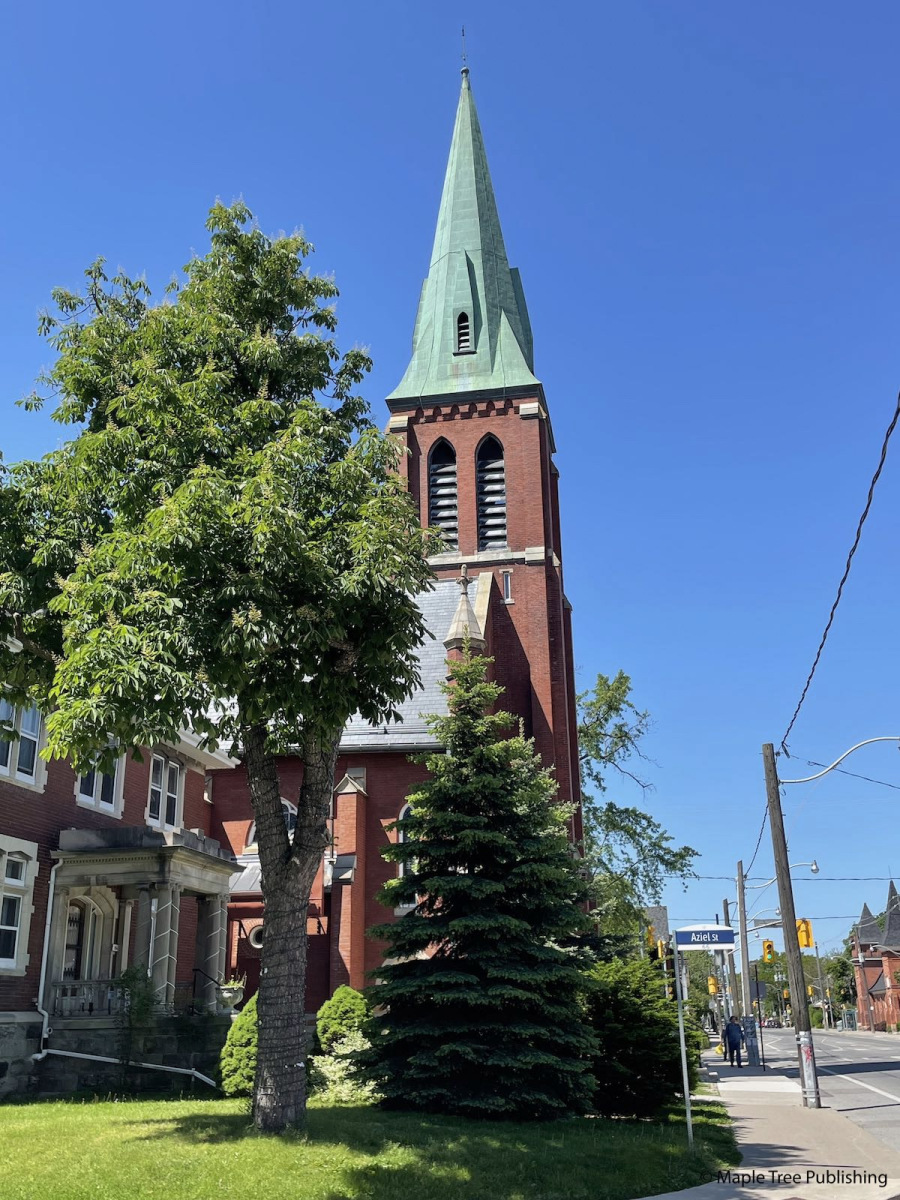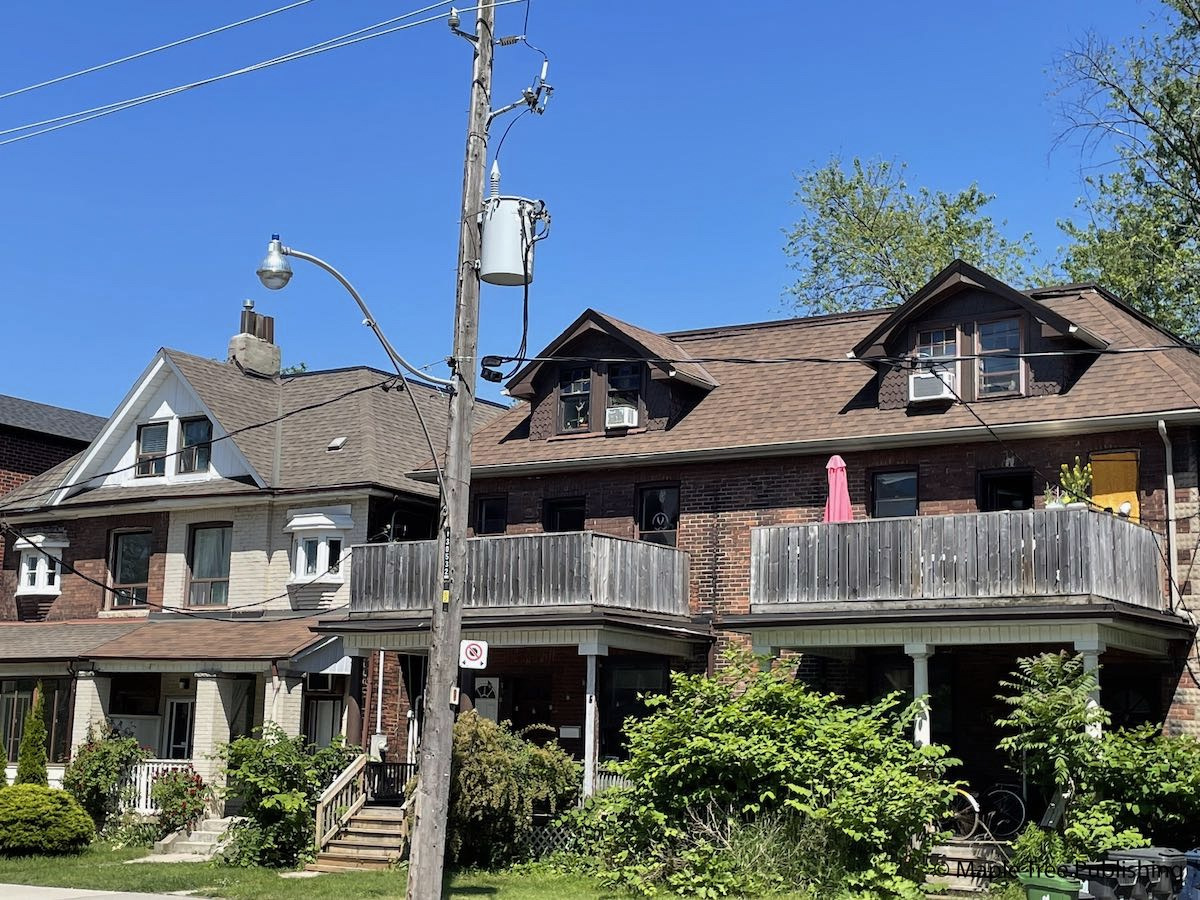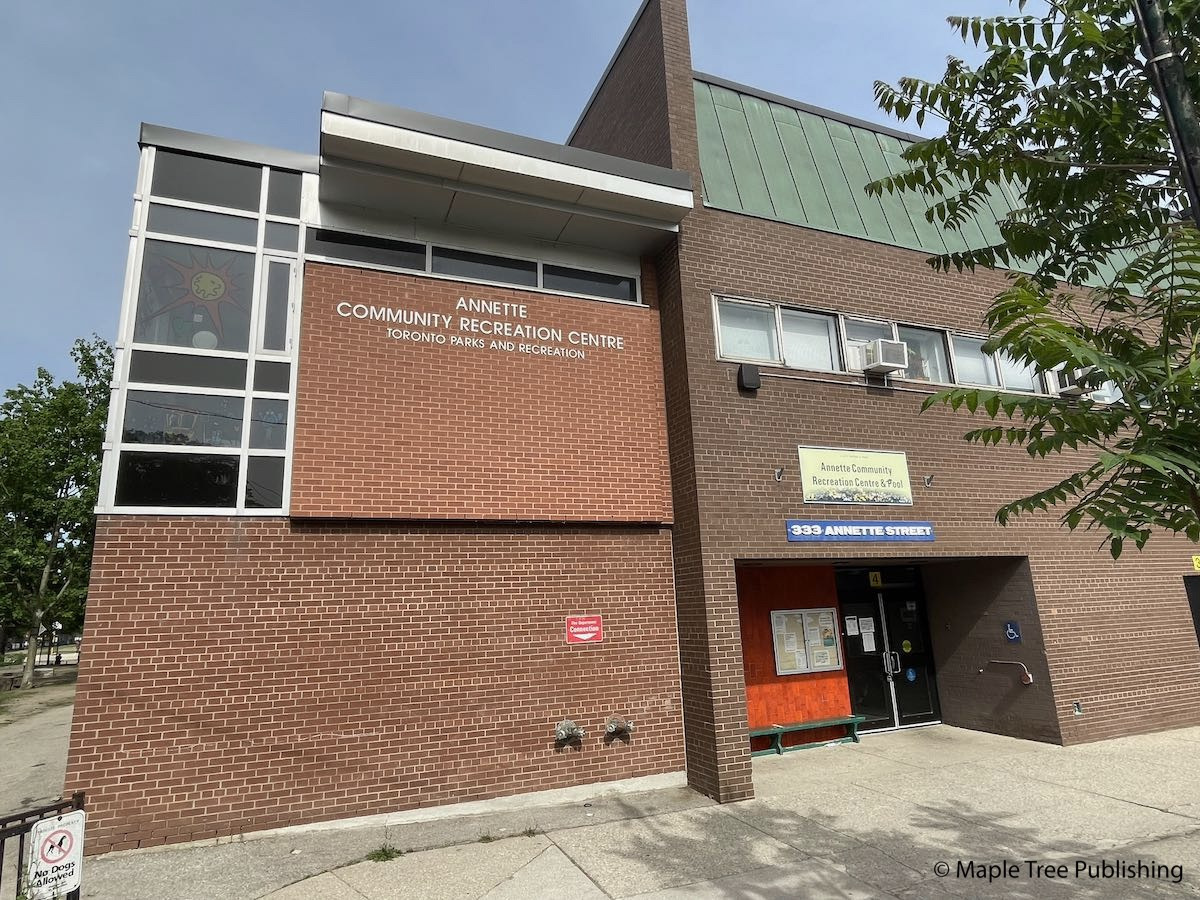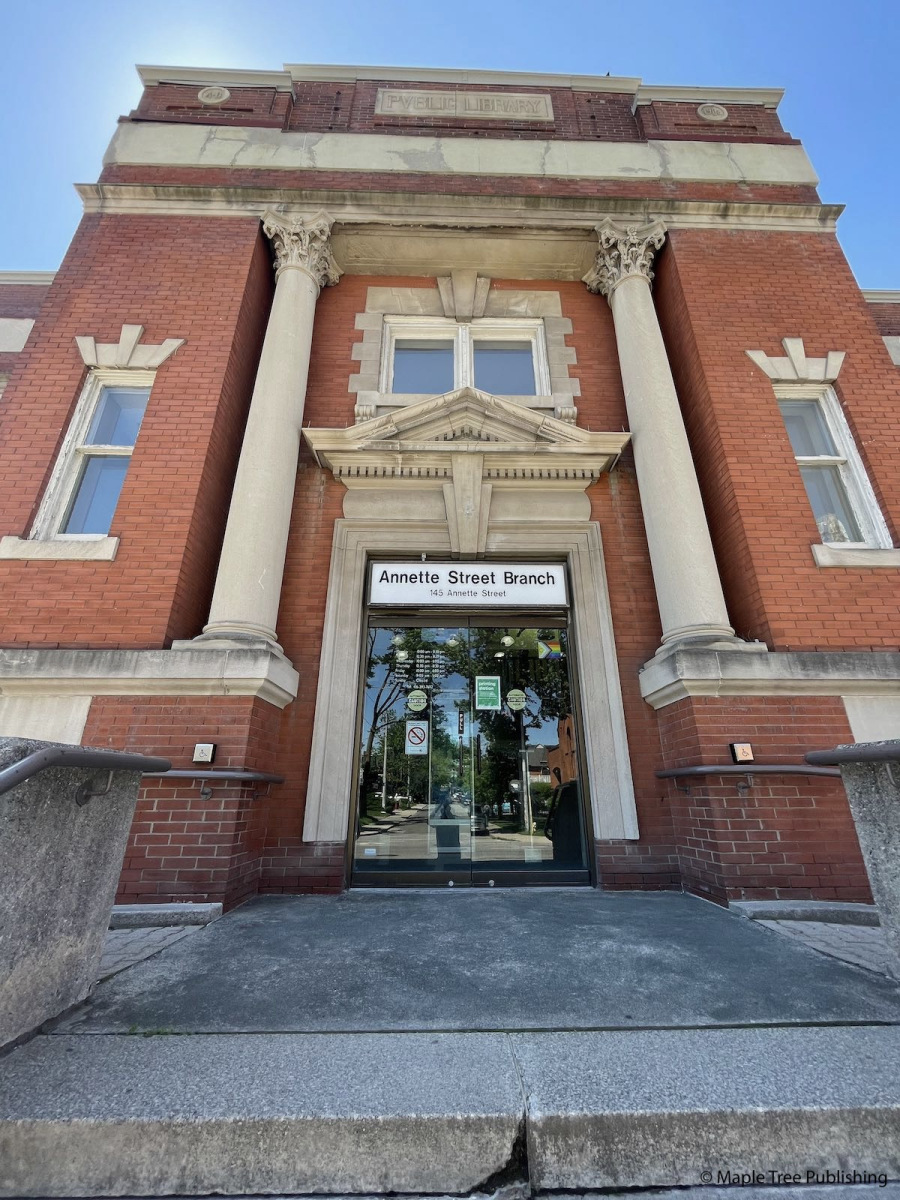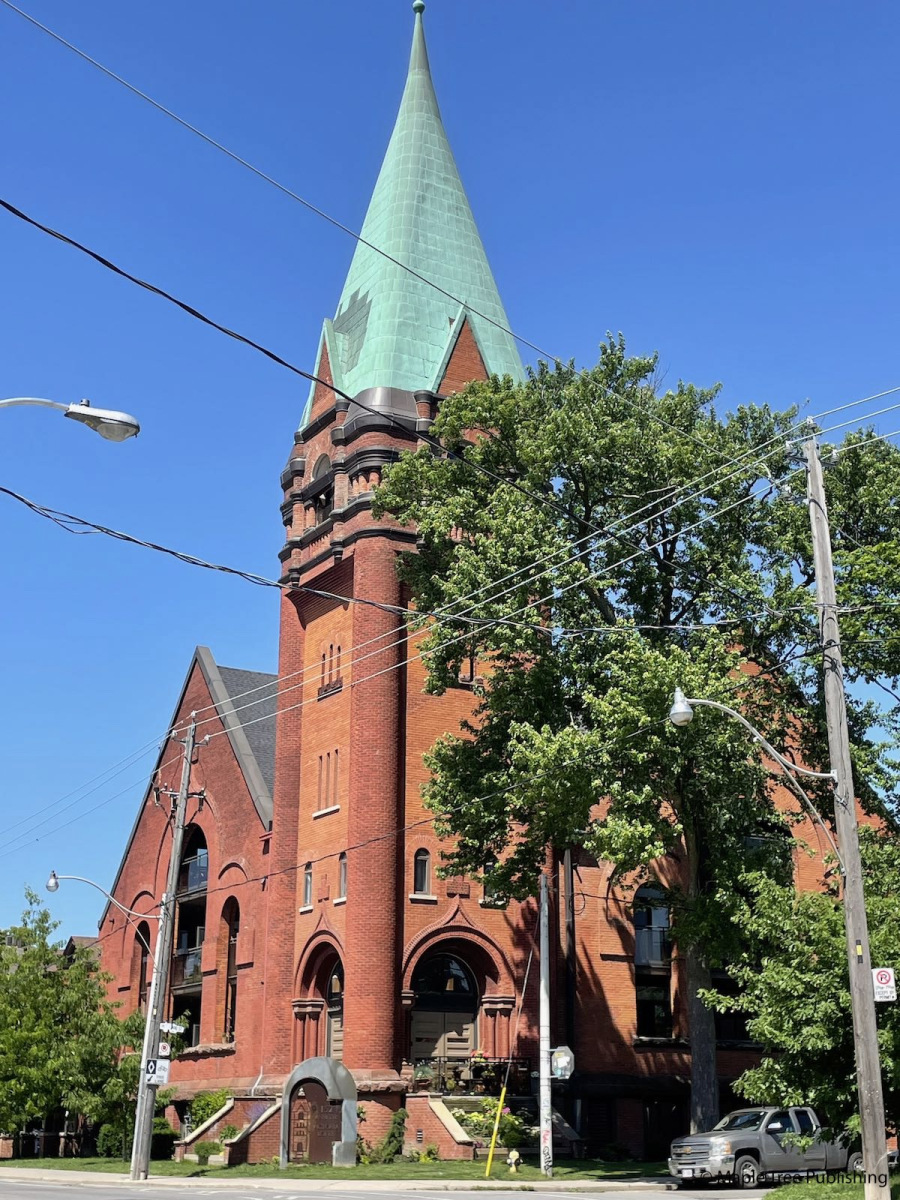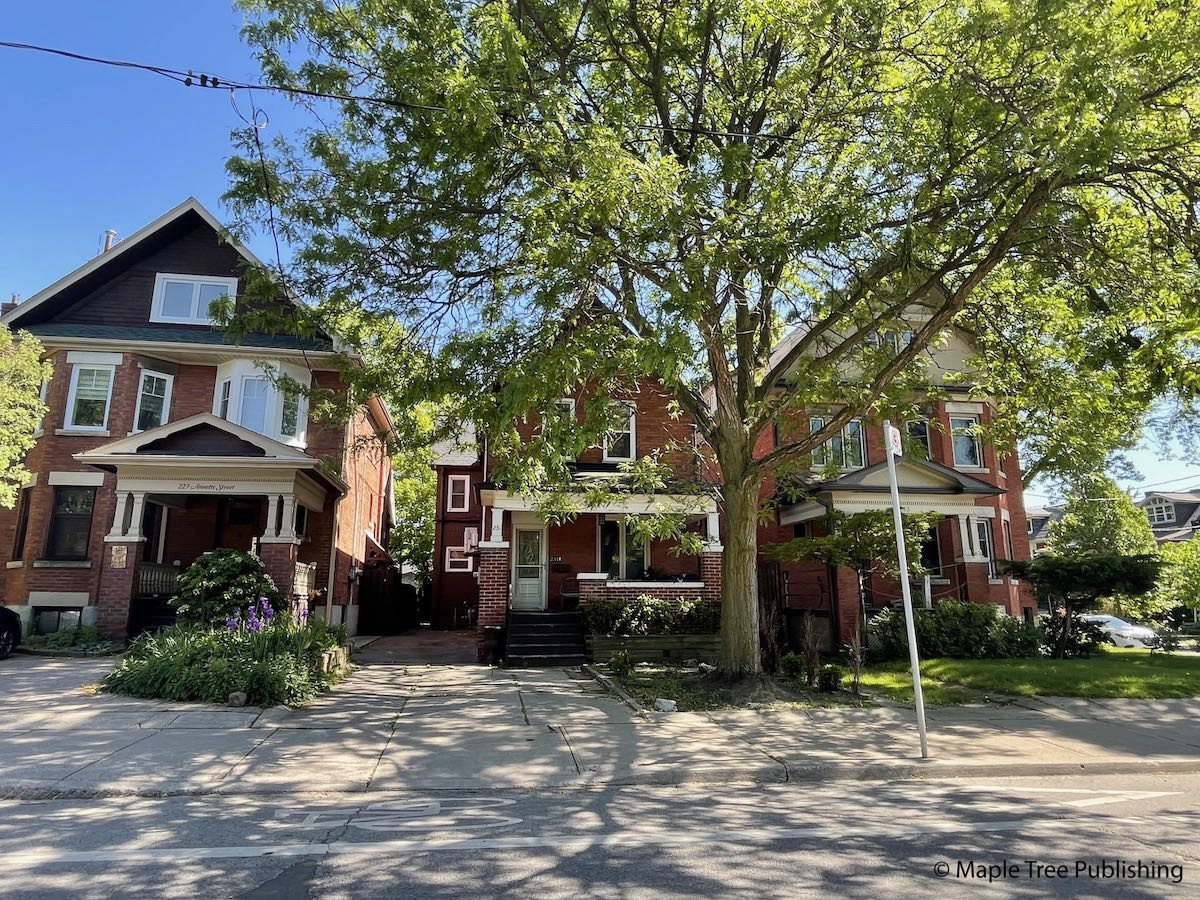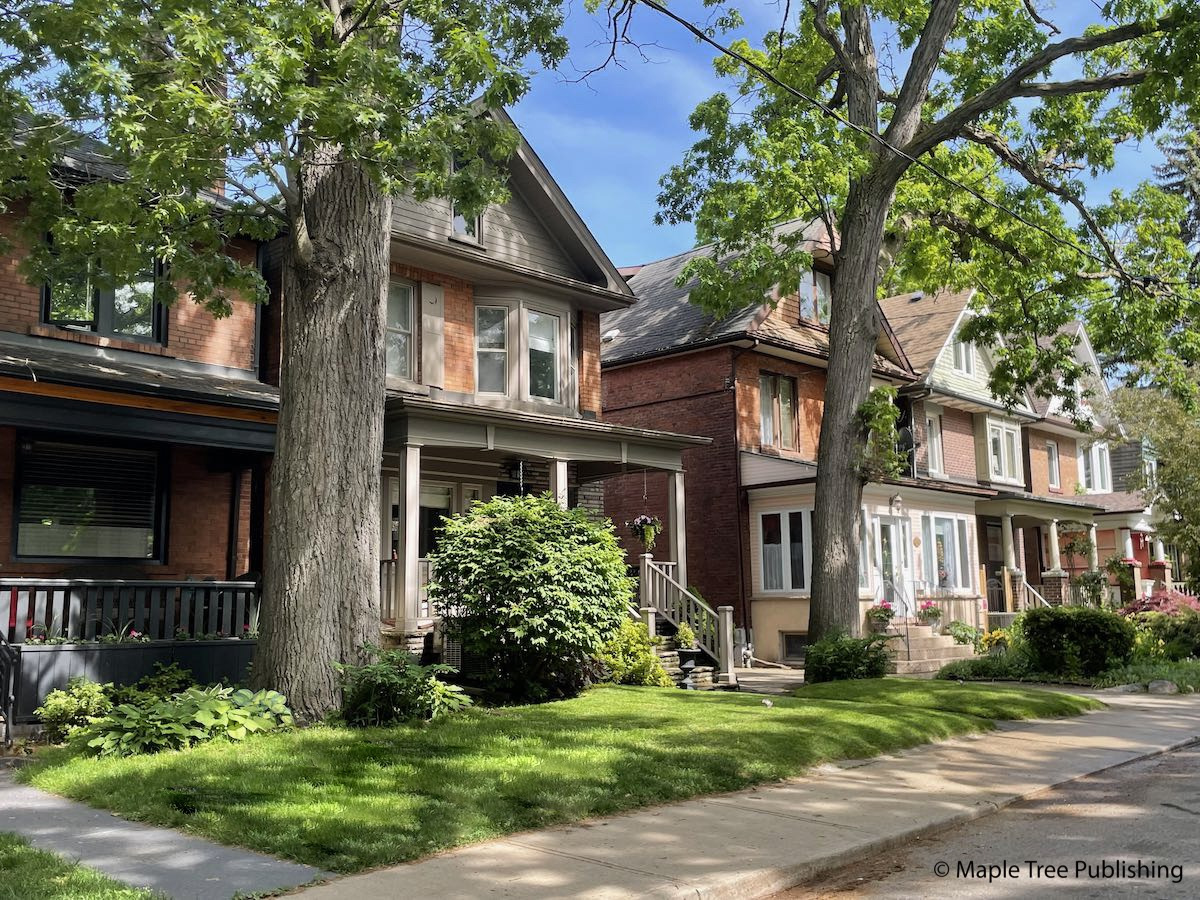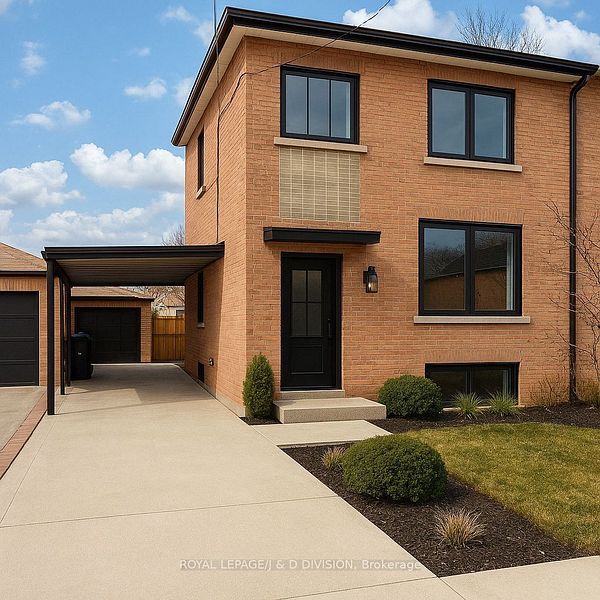West Toronto Junction
History:
West Toronto Junction began as a railway town in the 1870s. A convergence of railway lines operated nearby and opened stations and railyards, attracting manufacturers and their employers to the area. Many of the houses closest to Dundas Street housed the labourers and their families that first settled here. Excessive drinking and rowdiness led to a prohibition on alcohol being sold on Dundas Street West that lasted until 2000. In 1882 an ambitious young lawyer named D.W Clendenan in partnership with his uncle D. J. Laws purchased the Carlton Race Course property (the first running of the Queens Plate was held there in 1860owned by the Keele family. They then registered the West Toronto Junction plan of subdivision. By 1884 lots were being sold with ads in newspapers beckoning buyers to West Toronto Junction where they would enjoy commanding views of Lake Ontario and High Park. There were 5 miles of streets paved and over 1500 shade trees planted. By 1888 West Toronto Junction had enough residents to incorporate as a Village and by 1891 a Town with a population of 5,000. Churches, libraries and schools would soon follow. Throughout it’s early history the West Toronto Junction experienced boom and busts cycles. In 1909 the increased demand for more utilities and better roads led the ratepayers to vote in favour of annexation with the City of Toronto.
Editor’s Note:
West Toronto Junction historically encompassed a much larger area than shown on this website. In addition to the boundaries provided it included what is now generally referred to as the Bloor West Village and High Park neighbourhoods as well as parts of Junction Triangle, St. Clair Avenue West and the commercial shopping plaza known as Stock Yards Village.
For more information on this historic Toronto neighbourhood visit the website:
https://wtjhs.ca
Overview:
West Toronto Junction has managed to retain its original small town charm and appeal despite it’s prime location in Toronto’s bustling west end. Ironically the same railway tracks that skirt this neighbourhood and were responsible for it growth have seemingly also had the dual impact of sheltering the West Toronto Junction from the widespread gentrification that has taken place in many Toronto neighbourhoods. It is a little bit off the beat and path but well worth discovering. West Toronto Junction is still affordable and appeals to a wide demographic from young families, to artists to urban professionals. This is as true a neighbourhood as you are likely to find in Toronto. It has a strong sense of pride and history, a beautiful main street shopping district on Dundas Street West, cherished local schools, parks and library, and a diverse population that runs the gamut from gentrification to an edgy urban grittiness.
Lifestyle:
The commercial buildings on Dundas Street West are remarkably beautiful. They provide the perfect backdrop for this shopping destination that has become known for its independent retailers especially for home décor. Stores for children, alternative health options and a plethora of restaurants and bars are also part of the shopping mix. The area around Dundas Street and St.John’s Road is known as Little Malta where several Maltese Canadian businesses operate.
Homes:
West Toronto Junction has some of the finest architecture in Toronto. The winding tree-lined streets north of Annette Street feature rich red brick Victorian houses on generous size lots that boast decorative features such as roof top turrets, whimsical front porches and glamorous archways. There are some fine examples of Queen Anne and Arts and Crafts style house in this part of the neighbourhood. Closer to Dundas Street the houses are Victorian in style but much smaller and much less descriptive. The lots at the north-end of the neighbourhood are also narrower. You will find a that a fair number of the larger houses particularly on the main streets have apartments with two or more units which help pay for the upkeep and property taxes.
Recreation:
Residents of this neighbourhood are less than one mile from High Park, which contains a myriad of recreational opportunities. There are also four local parks located within this neighbourhood. Their facilities include playgrounds, wading pools and artificial ice rinks. The local YMCA, at Perth and Annette, offers a wide variety of programs for children and seniors. The Perth Dupont Public Library has programs for preschoolers and children.
Transportation:
The West Toronto Junction has bus service on Dupont, Dundas and Keele streets as well as on Symington and Lansdowne avenues. The Dupont and Dundas buses connect passengers to the Yonge-University-Spadina subway line, while the Keele, Lansdowne, and Symington buses connect with stations on the Bloor-Danforth subway line. Motorists can be downtown in approximately 10 minutes by way of either Bloor Street or Dundas Street.
Featured Listings
West Toronto Junction Stats
Walkability:
High
Bikeability:
Low
Public Transit:
Medium
Affordability:
Medium
Greenspace:
Low
Recreation:
Medium
Legend: Low, Medium, High
Commute Times
* All commuting times provided are approximate times only. Commute times may increase or decrease depending on where you live within the neighbourhood and the time of day i.e rush hour versus off hour commutes. Time estimates to public transit are based on walking distance or bus line connection whichever is quicker. All other commute times on the chart above are based on drive times.
School Guide
No Records Found
Sorry, no records were found. Please adjust your search criteria and try again.
Google Map Not Loaded
Sorry, unable to load Google Maps API.
Toronto School Resources

Editor’s Note. BEFORE MOVING INTO, BUYING OR RENTING A HOME, PLEASE CONTACT THE SCHOOL YOU ARE CONSIDERING BY PHONE to ensure your home is within the designated boundaries and that your child is age appropriate. WE CANNOT BE HELD RESPONSIBLE FOR ANY MISINFORMATION REGARDING SCHOOL ENROLLMENT SO DO NOT ASSUME that your child can automatically attend a specific school or specialized program until you have official confirmation from that school. Please visit the school board web sites for more information.
